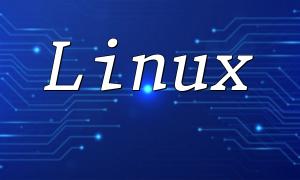As the internet continues to evolve, real-time communication features have become increasingly important in websites and applications. Whether it is for online chat, multiplayer games, or instant messaging, real-time communication has become a core technology for enhancing user experience. PHP, being a popular server-side programming language, offers several methods for implementing real-time communication, with WebSocket being one of the most commonly used technologies. This article will compare and analyze PHP real-time communication features and WebSocket, highlighting performance differences and offering relevant code examples.
PHP offers several ways to implement real-time communication, including Polling, Comet (long polling), and Server-Sent Events (SSE). Each of these methods has its own advantages and limitations, making them suitable for different scenarios.
Polling is a traditional method for real-time communication. The principle is that the client periodically sends requests to the server to fetch the latest data. While simple, this method results in higher network load and poorer real-time performance due to the need for frequent requests and responses.
Comet is an enhanced version of polling. In Comet, after sending a request, the server keeps the connection open until new data is available to send back to the client. This reduces the frequency of requests, but still creates a considerable network load, and the implementation is more complex.
SSE (Server-Sent Events) is a server-push technology based on the HTTP protocol. The client connects to the server using the EventSource object and receives real-time updates. Compared to polling and Comet, SSE is more efficient and reduces unnecessary requests and responses. However, SSE only supports one-way communication (server-to-client).
WebSocket is a full-duplex communication protocol designed to establish a persistent connection between the client and server, enabling bidirectional communication. Compared to the PHP real-time communication methods mentioned above, WebSocket has several distinct advantages.
<?php
$server = new WebSocketServer("localhost", 8000);
// Listen for connection events
$server->addListener("connect", function($connection) {
echo "Client connected: " . $connection->getId() . "\n";
});
// Listen for data reception events
$server->addListener("receive", function($connection, $data) {
echo "Received from client: " . $data . "\n";
// Process data and optionally send it to other clients
});
// Listen for disconnection events
$server->addListener("disconnect", function($connection) {
echo "Client disconnected: " . $connection->getId() . "\n";
});
// Start the server
$server->start();
?>
<!DOCTYPE html>
<html>
<head>
<title>WebSocket Client</title>
<script>
// Create a WebSocket object
var socket = new WebSocket("ws://localhost:8000");
// Connection successful event
socket.onopen = function(event) {
console.log("Connected to server");
};
// Message received event
socket.onmessage = function(event) {
console.log("Received from server: " + event.data);
};
// Connection closed event
socket.onclose = function(event) {
console.log("Connection closed");
};
// Send message to the server
function sendMessage() {
var message = document.getElementById("message").value;
socket.send(message);
}
</script>
</head>
<body>
<input type="text" id="message" />
<button onclick="sendMessage()">Send</button>
</body>
</html>
From the example above, we can see that using PHP to implement WebSocket communication is relatively simple. On the server-side, you create a WebSocketServer object and listen for connection, data reception, and disconnection events to handle client requests. On the client-side, a WebSocket object is created to establish a connection to the server, enabling message sending and receiving.
Through the comparison, WebSocket has clear advantages in terms of low latency, low network load, and bidirectional communication. For applications requiring real-time communication, WebSocket is the more appropriate technology choice. While PHP’s traditional real-time communication methods such as Polling and SSE may suit some use cases, WebSocket offers superior performance in high-demand scenarios.









